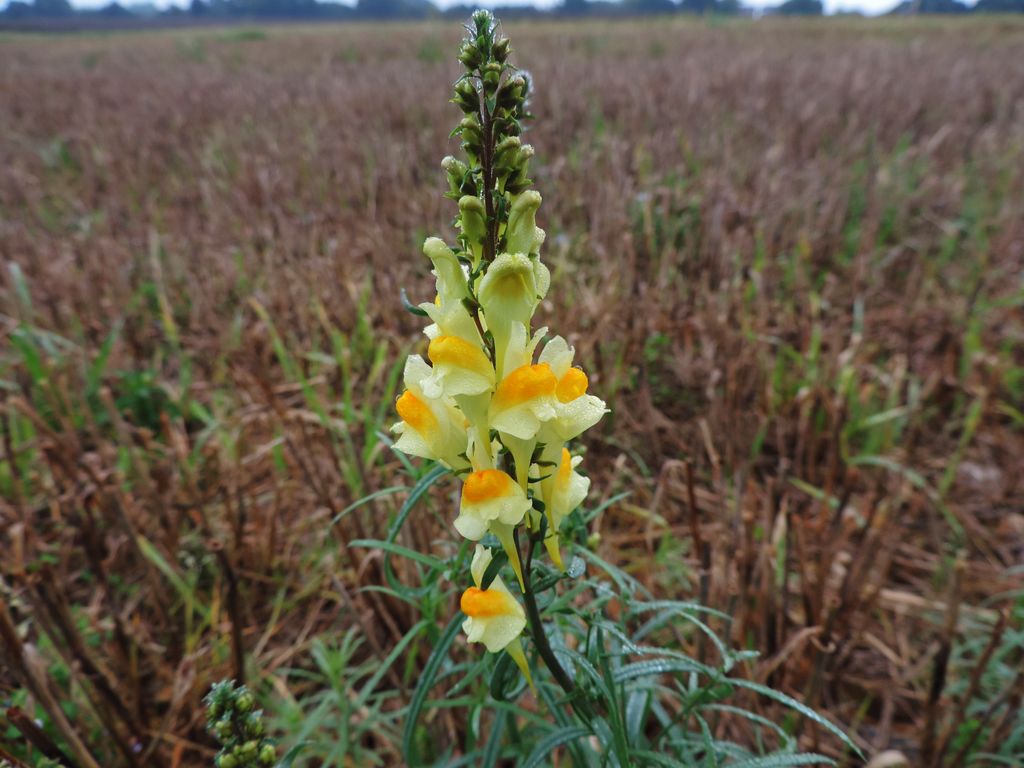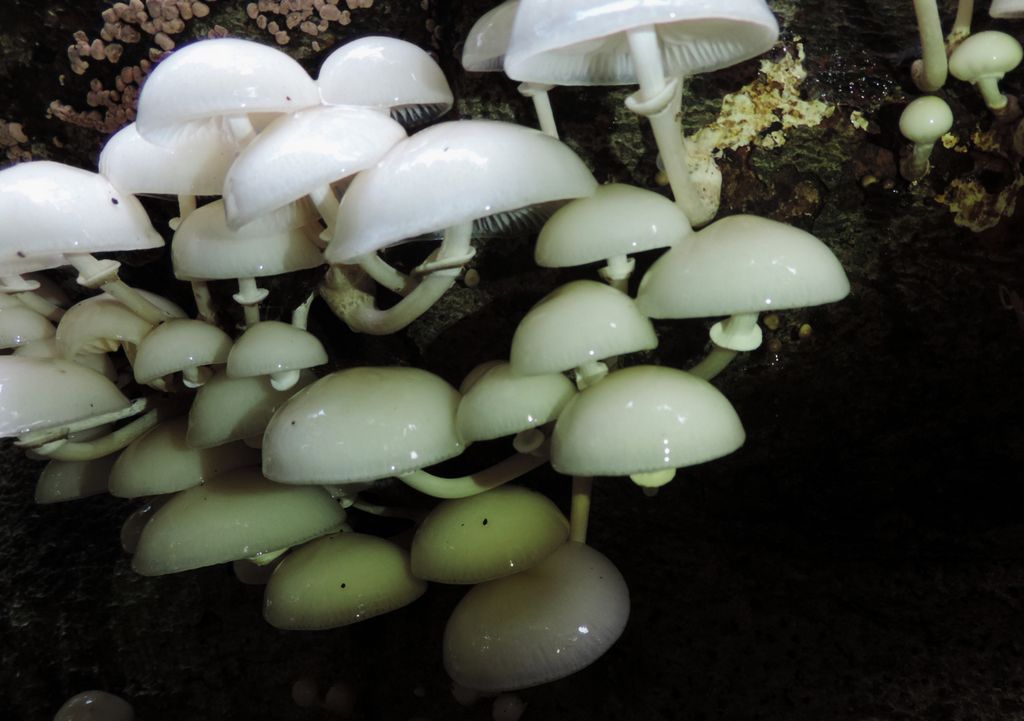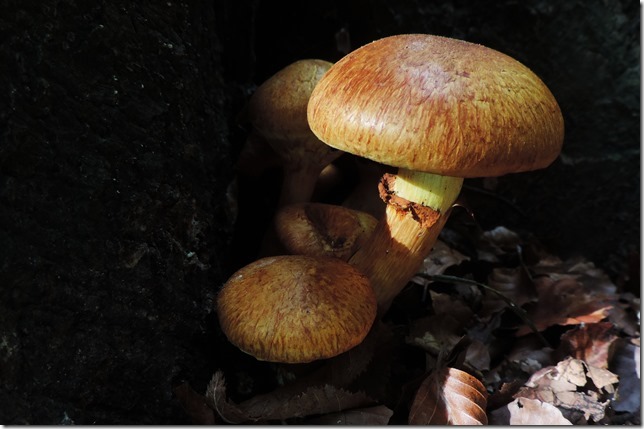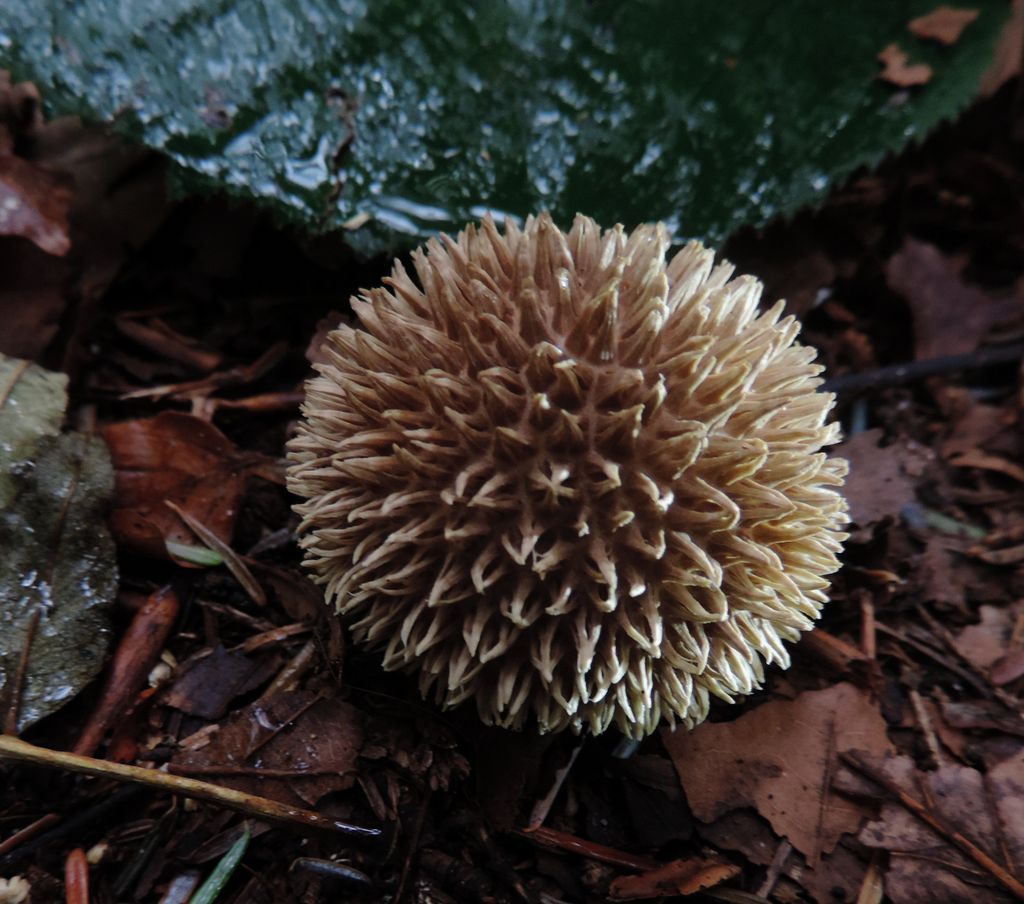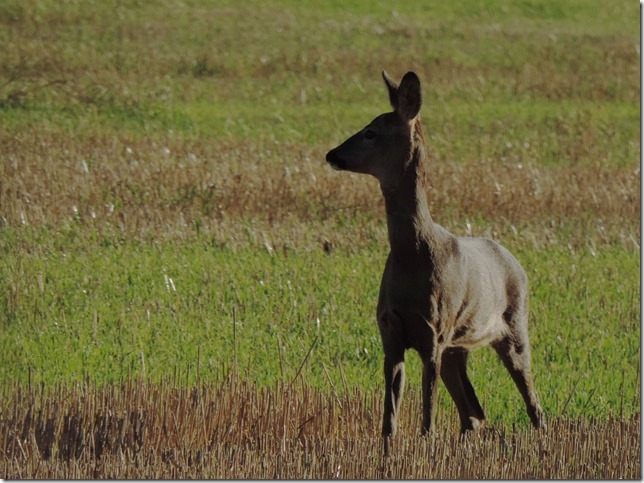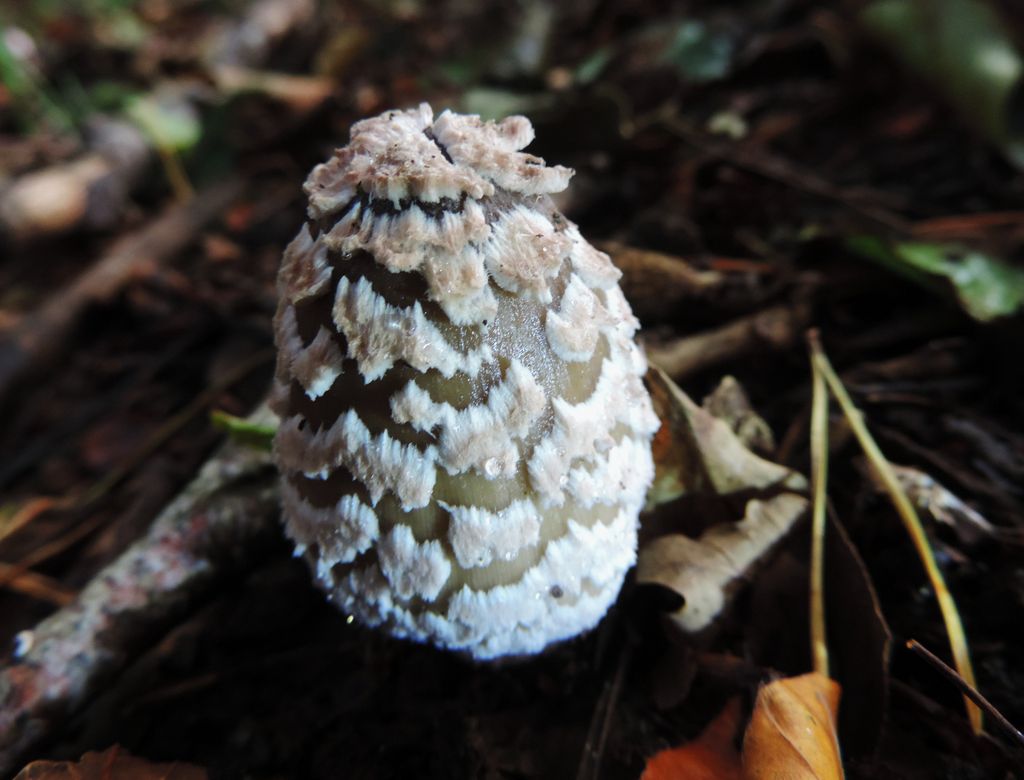David Owens led a walk round the northern section of Sulham Woods on the morning of Saturday 16 October. Starting from Beech Road, Purley, the group set off up a footpath towards the woods. First sighting was a Kestrel, which flew across the grassy field to the right of the path. The route led through a gap in the hedge on the left into a stony stubble field. In the distance, a bank of mist rose above the field and Skylarks sang overhead. Plants found here included Field Madder, Field Pansy, Scarlet Pimpernel, Common Figwort, Common Toadflax and Common Poppy. The walk continued into Mosshall Wood, the northern sector of Sulham Woods. Beside the track are two big chalk pits, and overhanging the edge of one of them was the trunk of a fallen Beech tree on which were growing many tufts of glossy white Porcelain Fungus. The route then led in an anti-clockwise direction along the track which runs around the edge of the woods. In the north-west corner, on bare ground below big Beeches, were a number of Helleborine plants. This is a spot where Narrow-lipped Helleborines are regularly found in flower in July. A number of plant spikes, with the seed heads grazed off, did indeed have long narrow leaves arranged in two opposite ranks, as is the case for the Narrow-lipped Helleborine. But the two biggest plant spikes, with their seed heads intact, had their leaves arranged spirally up the stem, as found on the Broad-leaved Helleborine. A little further on, under the trees beside the path, was a line of white fungi which coloured yellow when scratched, revealing their identity as the poisonous Yellow Stainer. Bright red berries of Black Bryony scrambled through the vegetation at the side of the path, while nearby, pink Spindle berries showed no sign of their orange seeds yet. The leaves on the trees were still mostly green, with just a few Sycamores and the odd branch of Beech showing autumn colours. Around the base of one stump were dense tufts of Glistening Inkcap. On another stump were pink blobs of Wolf’s Milk slime mould, while on a rotten fallen branch nearby were the white dots of another slime mould. Jelly Ear fungus was found on a dead branch and Yellow Stagshorn was seen on a fallen trunk. White leaves and red berries on the ground betrayed the presence of Whitebeam trees. The walk continued southwards along the bottom strip of woodland to a cluster of Wild Service-trees, with one big tree and a number of smaller suckering trees. The big tree had purplish-brown berries. David compared the alternate leaves and berries of the Wild Service-trees with the opposite leaves and winged seeds of the superficially similar Field Maple and Sycamore. Around a fallen trunk higher up the slope were tufts of a chunky-stemmed yellow fungus which was later identified as Spectacular Rustgill.
The group then retraced their steps for some distance before climbing uphill towards the conifer plantation at the top of the woods. Fly Agaric fungi were found near the base of a Birch tree, with a pink Rosy Bonnet fungus nearby. At the side of the path were two Spiny Puffballs, with many Common Puffballs in rings and lines further on beneath the conifers. A tuft of the creamy Upright Coral fungus was growing on a stump by the gate where the path led out into another stubble field. Two Roe Deer were grazing in the distance in the next field and the distinctive seed heads of Fool’s Parsley were noted amongst the stubble. The route then turned north along a narrow strip of woodland where there were many Field Maples. An apple tree beside the path had a heavy crop of sour green fruit. The next path ran eastwards along the southern boundary of Mosshall Wood, where a big patch of Butchers Broom, with red berries and tiny creamy-white flowers, was inspected. Nearby were four Collared Earthstars and two Magpie Inkcaps. Tall larches tower high above this part of the wood. David had used an inclinometer to estimate their height at about 33 metres. The path then led past the chalk pits at the entrance to the wood, out onto an area of grass where an unexpected sighting was a Cowslip in flower and into the final strip of woodland. The view from a seat at the edge of the wood looked up the Thames Valley towards the hills on the National Trust land at Streatley. The final stretch of footpath then led back to Beech Road.
Pictures by Rob Stallard

